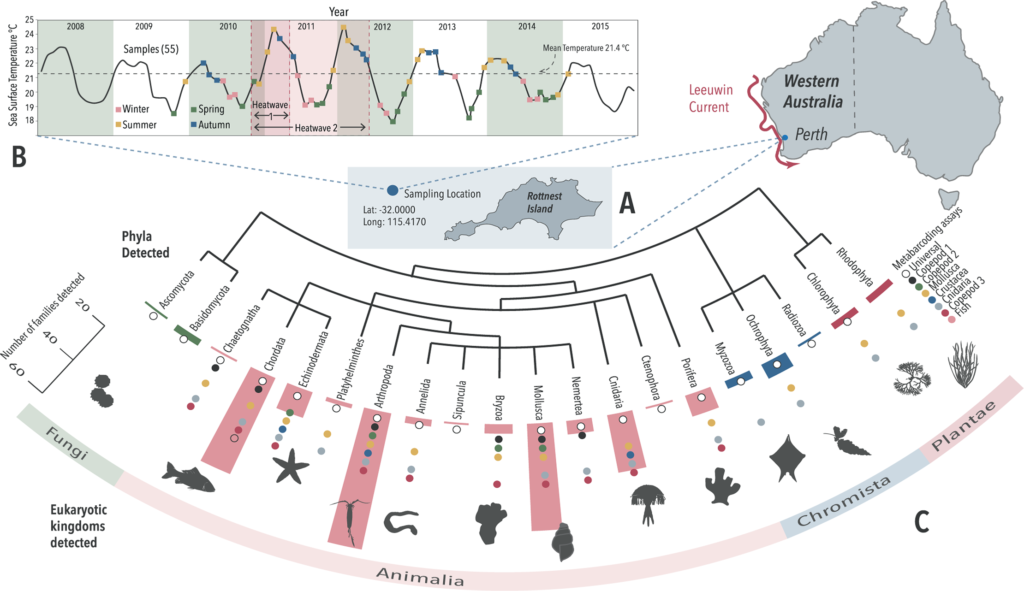Marine eDNA can be used to monitor biodiversity in the world’s oceans
A Curtin University and CSIRO Environomics FSP collaboration has resulted in the publication of the first long-term environmental analysis based on eDNA in PLOS Genetics.
Sea water contains eDNA, the genetic remnants of the biodiversity it supports. Reading eDNA means we can identify species living in an area, from plankton to sharks, and monitor in fine detail how they change over time. All this can be done without entering the water.
With access to a set of samples collected from a single site in the Indian Ocean over a five year period by the Integrated Marine Observing System (IMOS), PhD student Tina Berry and her co-authors developed an eDNA toolkit to analyse the samples and test the idea that species can be monitored via their trace DNA.
Their results showed in great detail how the biological communities in this area responded to normal seasonal changes and, more importantly, to an uncharacteristic heatwave. The study will pave the way for long term marine monitoring programs across the globe using eDNA.

Fig 1. Extent of marine taxa revealed by eDNA from Rottnest Island (A).
55 monthly plankton samples taken across five years (2009–2015) and an extreme heatwave event (B), which yielded 245 families of eukaryotic zooplankton across 20 phyla (C).
